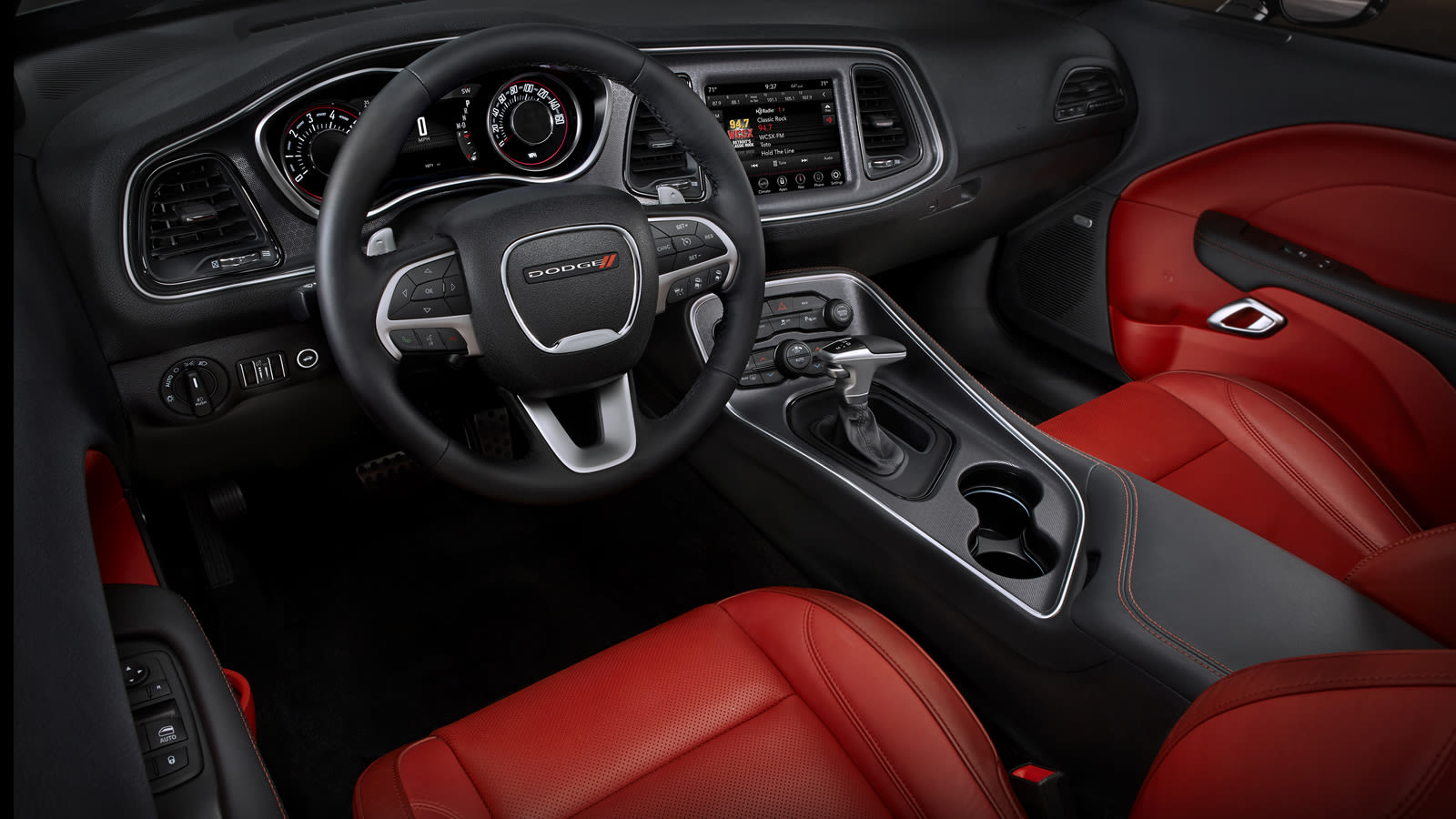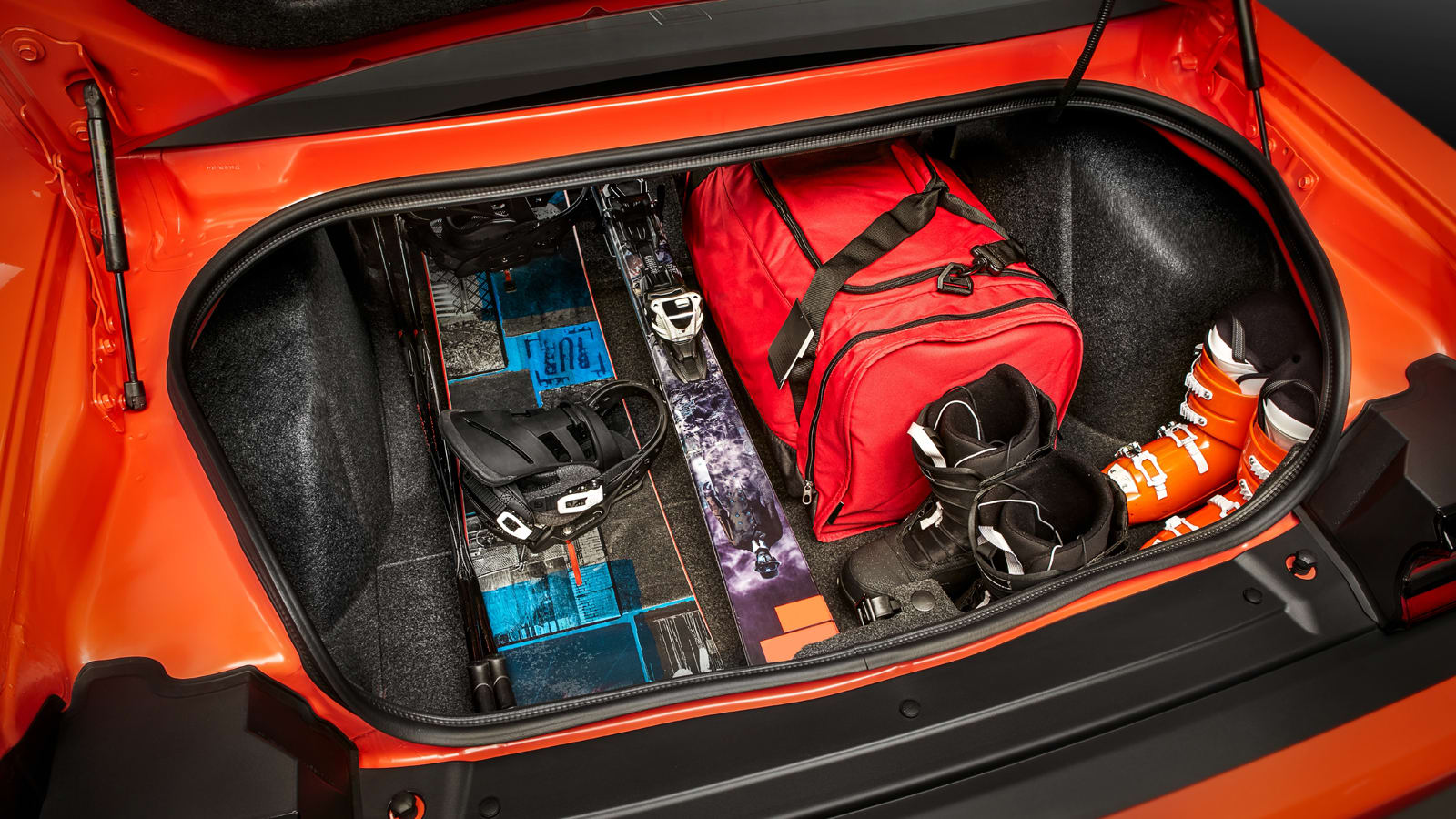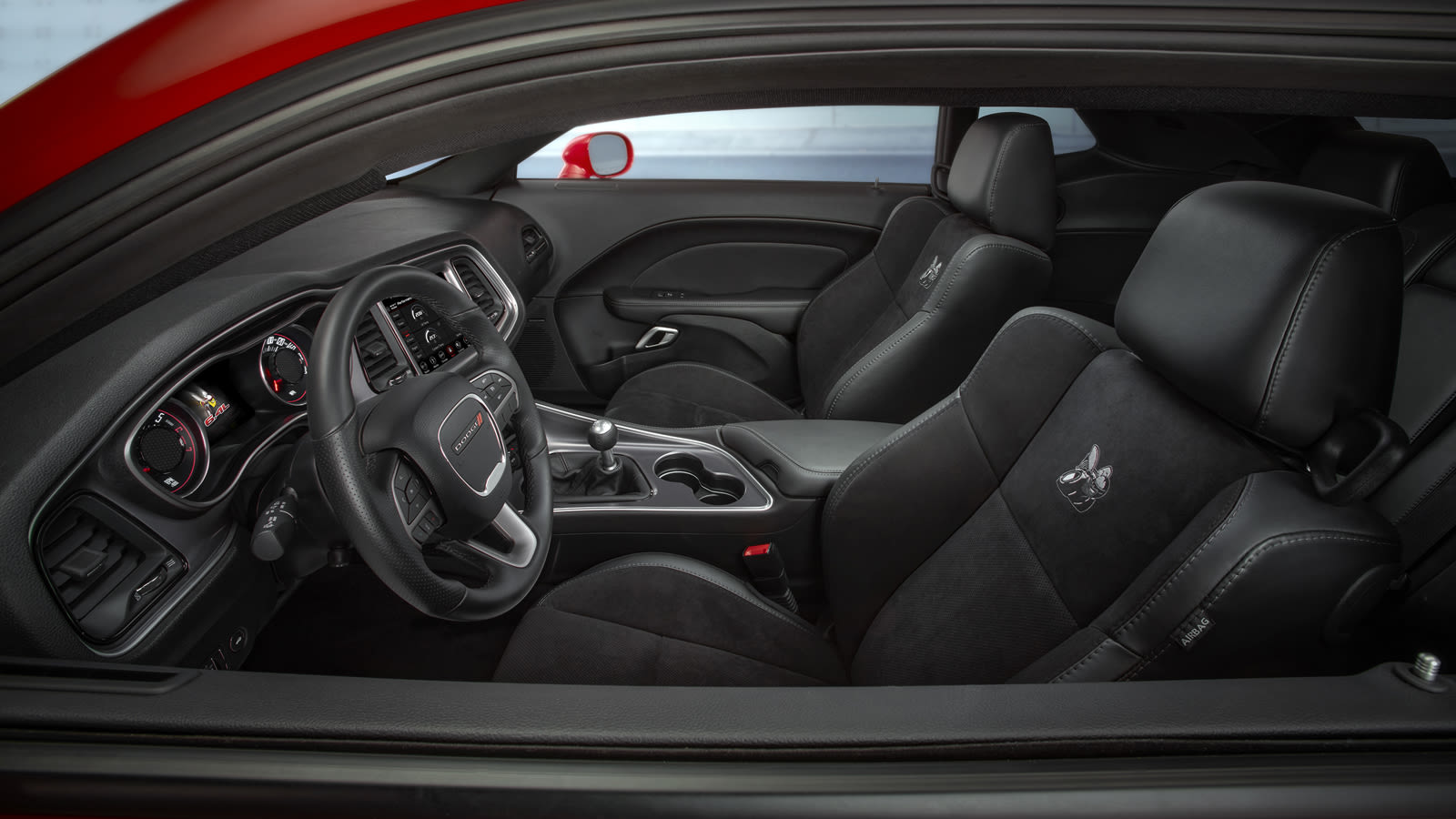The Dodge Challenger has now been kicking around without a complete redesign for a decade, yet it actually seems to be getting more popular in its old age. Credit a substantial overhaul a few years ago, constant tinkering, and a yearly roll out of exciting new variants. For the 2019 Dodge Challenger, we welcome the 797-horsepower Hellcat Redeye and R/T Scat Pack Widebody.
However, there's an inherent honesty and unique goodness to the Challenger that allows it to still duke it out with the Ford Mustang and Chevy Camaro – despite those age-old rivals' transformation into something more akin to a sports car. The Challenger, by contrast, is 100% muscle car more concerned with straight-line performance than handling precision. It's also much bigger and practical, lending itself better to daily driver duty. That, plus its distinctive style and diverse model lineup, make it easy to see why the Challenger continues to enjoy such massive success. You can certainly count us among its fans.
What's new for 2019?
We say goodbye to the SRT 392 and Demon, but hello to the 797-horsepower Hellcat Redeye and R/T Scat Pack Widebody. The regular Hellcat gets a 10-hp bump as well as a new "dual snorkel" hood. Further down the Challenger pecking order, you can now get all-wheel drive on the base SXT.Read More : New 2019 Audi A6 Performance Review



What's the interior and in-car technology like?
The Challenger's interior certainly isn't as characterful and flamboyant as its exterior would suggest. The Mustang and Camaro are more interesting and distinctive inside. Still, there are some interesting design flourishes that spruce things up, from the base trim's standard houndstooth cloth to the two-tone leather choices available as options. Besides, we're not sure how flamboyant you need the interior to be in a car available in electric orange, blue, green and purple paint colors.Furthermore, what the Challenger interior may lack in visual pizzazz, it makes up for with space (see below) and technology. A 7-inch touchscreen is standard, but all trim levels have an 8.4-inch version available as an option or standard. Both are among the easiest to use in the industry, and we prefer the 8.4-inch unit in particular to what's offered by the Camaro and Mustang. Heck, the Ford doesn't even come standard with a touchscreen, let alone the Apple CarPlay and Android Auto that are included on every Challenger.
How big is it?
For a performance coupe, the Challenger is enormous. It's nearly 9 inches longer than a Camaro or Mustang; 3 or 4 inches taller, respectively; and its wheelbase is 6 or 9 inches longer. The most basic Challenger SXT weighs 400 pounds more than a V6 Camaro. While that size is definitely a detriment to the Challenger's handling and straight-line performance, it's a boon for interior space and everyday functionality. Unlike in the Mustang and Camaro, actual adults can fit comfortably in the Challenger's back seat, while its 16.2-cubic-foot trunk would be big for a midsize sedan. The Camaro's is nearly half the size. As such, it's much easier to justify buying a Challenger to be a daily driver.







What's the performance and fuel economy?
Strap in kids, this is going to take a while to get through. The SXT and GT get a 3.6-liter V6 good for 305 hp and 268 pound-feet of torque. An eight-speed automatic and rear-wheel drive are standard, but you can add all-wheel drive – the only engine so offered. Fuel economy is 23 mpg combined with RWD and 21 mpg combined with AWD. You can expect a zero-to-60 time in the low-6-second range, which is pretty quick, but ultimately pokier than the four-cylinder Camaro and Mustang.
Next up is the 5.7-liter V8 found in the Challenger R/T good for 372 hp and 400 lb-ft of torque with the standard eight-speed automatic. It goes up to 375 hp and 410 lb-ft with the optional six-speed manual, which seems like a pretty great reason to get a three-pedal car. Fuel economy is 19 mpg combined with the automatic and 18 mpg combined with the manual. This engine basically shaves a second off the 0-60 time.
The R/T Scat Pack model has a 6.4-liter V8 good for 485 hp and 475 lb-ft of torque regardless of whether you get the automatic or manual. Fuel economy is 18 mpg (auto) or 17 mpg (manual). Again, you'll be knocking another second off the 0-60 time, which should be in the low 4's. (For those really interested in taking their Scat Pack to a drag strip, its new 1320 package adds several mechanical upgrades and subtracts weight for improved quarter-mile times).
Now for the heavy artillery. The 2019 Hellcat (pictured below) gets a supercharged 6.2-liter V8 good for an absurd 717 hp and 656 lb-ft of torque. It can be paired with the automatic or manual, and if you're asking about fuel economy, you shouldn't be considering a Hellcat. Its 0-60 time is likely only a few tenths of a second quicker than the Scat Pack, but that says more about the limits of rear-wheel-drive grip. Don't worry, the Hellcat feels like it has an extra 232 horses.
And finally, new for 2019 is the Hellcat Redeye, which is effectively a detuned version of the one-year-only Demon. Its version of the Hellcat engine produces 797 hp and 707 lb-ft of torque. Its 0-60 time should be 3.4 seconds, according to Dodge, while the quarter-mile should disappear in 10.8 seconds.



What's it like to drive?
Given the tremendous breadth of performance available, it shouldn't be surprising that driving the Dodge Challenger differs greatly depending on the version you get. As such, we recommend testing as many versions as possible to determine which is right for you (doesn't that sound fun?). Beyond models, engines and transmissions, make sure to consider options as well – specifically the SXT and R/T's Super Track Pak that add sport-tuned suspension and steering, and upgraded brakes.
Now, for broad strokes, expect every Challenger to be more cumbersome to drive than its muscle car competitors. Its handling just isn't as good, regardless of the model you choose. Now, its ride tends to be more comfortable, but the magnetically controlled suspensions available on the Mustang and Camaro are actually able to best it in that arena as well.
As such, if you're automotive tastes skew toward the handling/mountain-road variety, the Challenger isn't for you. If, however, you're more of a high-speed-cruising/road-tripping/shred-the-tires-in-apocalyptic-amounts-of-smoke kinda guy, well, this is definitely the car for you. Indeed, the Challenger is the most like an actual muscle car in this regard, akin to a classic Chevrolet Chevelle SS or the original Dodge Challenger.




What features are available and what's the price?
There are so many models and options available on the 2019 Dodge Challenger that this section would start to resemble an order sheet if we tried to list it all. Luckily, we provide a pretty clean breakdown here on Cars Payback featuring each model's features, specs and local pricing.
In brief, though, every Challenger comes standard with proximity entry and push-button start, dual-zone automatic climate control, a power driver seat, a leather-wrapped steering wheel, 60/40-split back seat, two USB ports, a 7-inch Uconnect touchscreen, Apple CarPlay, Android Auto and a six-speaker sound system.
Note that below prices are only for the basic trim levels. There are other sub-trims such as Widebody versions, the T/A (an appearance package) and R/T Scat Pack Shaker (an engine intake that pokes through the hood). All prices includes a $1,395 destination charge, while the Hellcats also include a $1,700 gas guzzler tax.
SXT: $25,690
GT: $31,690
R/T: $35,495
R/T Scat Pack: $40,390 ($1,000 gas guzzler tax added with manual transmission)
SRT Hellcat: $61,745
SRT Hellcat Redeye: $72,745
What's its safety equipment and crash ratings?
The Challenger comes standard with a typical amount of six airbags and a rearview camera, while blind-spot and rear cross-traffic warning, forward collision warning and adaptive cruise control are optional. Note that the latter two cannot be paired with a manual transmission.
In government crash testing, the Challenger received a five-star overall rating, along with four-star frontal and five-star side ratings. In testing by the Insurance Institute for Highway Safety, the Challenger got the best-possible rating of "Good" in the side and moderate overlap front crash tests, but a second-best Acceptable for roof strength. It got a Marginal rating (three of four) in the new IIHS small overlap front test. This isn't surprising given how long the Challenger has been around since a complete redesign. Its frontal crash prevention system got a rating of Basic.










0 Comments